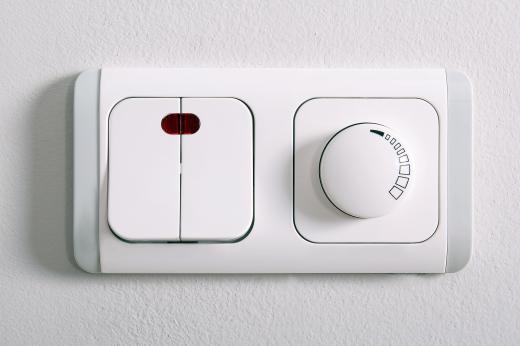A time switch is a device that has a built-in mechanical or electronic timer that turns an electrical circuit on and off at certain times of the day. The electrical current typically is used to perform a task that otherwise would be done by a person. Time switches work in a variety of areas, such as irrigation or other water pumps, indoor or outdoor lighting, ventilation systems and other devices that need to be turned on and off throughout the day. A time switch automatically performs these tasks so that a person doesn't have to remember to do so or have to physically flip a switch at certain times every day.
A time switch plugs into an electrical socket between the power plug and the actual socket. This arrangement allows the device or devices to receive power for a specified time. There usually is a cover that has instructions on how to use the time switch and the rating limits for the time switch.

The time switch has a dial that can be set to the proper time. This motorized dial keeps time, just like a clock or watch. As the dial advances, it triggers the mechanisms for turning the device on and off at the proper times. These mechanisms are located on the face of the dial and usually are bolted down at the desired times. Some units allow the user to set the switch to go on and off several times during the day.
There also are electronic versions that can be programmed to switch on and off at certain times. Mechanical time switches often allow a limited number of time settings, but electronic versions typically allow for an unlimited number of times that a device is switched on and off each day. Some electronic time switches, however, might need to be reprogrammed after losing connection to an electrical current, such as when there has been a power outage or when a switch is unplugged for any reason.
